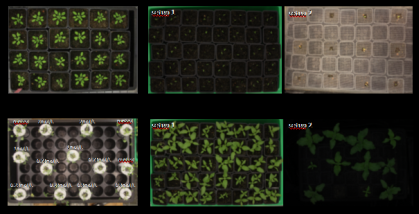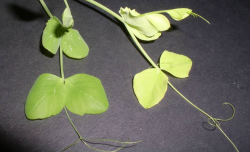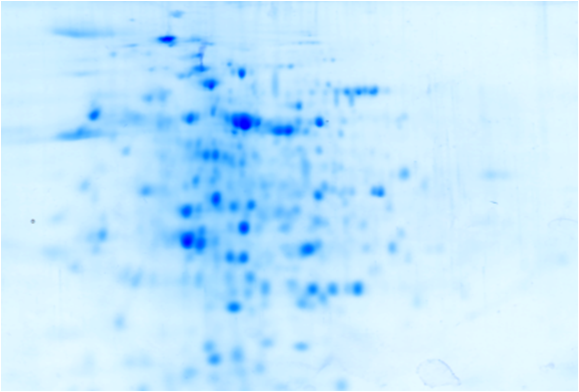Sabine Lüthje
Dr.rer.nat.habil.
Private Lecturer
Private Lecturer
Oxidative stress and plant development
Plants are sessil organisms that have to cope with multiple abiotic and biotic stress factors during their life cycle. We are interested in plant nutrition, toxic elements, weather extremes and multiple stresses that occurred during plant development.Phenotyping
To study stress response and adaptation of plants setups for phenotyping rosette-like structures were established. Pictures are taken from Arabidopsis, Medicago or Mesembryanthemum with digital cameras from the top every 10-20 minutes during growth and stress treatment. For data evaluation pictures were analyzed using Image-J 1.49t Fiji software and a self-made plugin (S.Fraas, University of Hamburg). By defining HSV settings, identification of the leaves allows automatic analysis of all pictures. Different parameters (e.g. perimeter, major axis) can be quantified and assessed. Experimental setup for non-rosette-like structures is also available. Beside morphological monitoring, phenotyping on cellular level (physiological, histological and biochemical data) is routinely done.Heavy metals
Studies of our team showed alterations in the plasma membrane proteome of iron uptake strategy I and strategy II plants (pea and maize) by both iron deficiency and iron toxicity for the first time. Peroxidases, redox systems and several other proteins are regulated by these stressors. The combination of iron deficiency with elicitor treatment support important functions of heme containing enzymes, but also of other plasma membrane proteins, in pathogen response.Emissions of industrial activities cause accumulation of cadmium and other toxic elements in the environment. Ions of these elements are taken up by unspecific transporters. Inside the cell, they cause oxidative stress and thereby changes in the cellular redox state. The molecular mechanisms of these reactions are not very well understood. So far, total peroxidase activity of samples is used as a general stress marker for many factors. My team established protocols to study the regulation of different peroxidase isoenzymes side by side in the same sample. We found that abundance and activity of different soluble, cell wall and membrane bound class III peroxidases changed under cadmium exposure.
Weather extremes
Due to changing climate heat, drought and flooding events increases in northern hemisphere. Additionally, the use of heavy machinery in agriculture cause soil compaction, which supports waterlogging. Flooding provokes alterations in pH and oxygen levels (hypoxia and anoxia) in the soil and thereby iron toxicity. A recent study of our team showed alterations in abundance and activity of soluble class III peroxidases in maize by waterlogging.
Phenotyping

Iron deficiency

Induction of FRO

2D-PAGE

native IEF-PAGE





